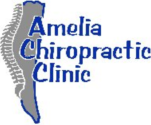Fernandina Beach Chiropractic Care Services
Real Solutions to Pain Problems - That Work!
Back pain. Leg pain. Neck pain. Arm pain. At Amelia Chiropractic Clinic, we know you're suffering. And we know that, if you're like other sufferers in Fernandina Beach, you've searched everywhere for some kind of lasting relief... some chiropractic methods, or other remedy that manages your pain to improve your quality of life.
Rest assured,we can help. After all, we've helped many Fernandina Beach residents find relief from recurring back, leg, neck, or arm pain and improve the quality of their lives - using our Cox Technic chiropractic treatment.
As chiropractic specialists, we've trained for a minimum of seven years in the diagnosis and treatment of human discomfort. Our focus is on natural methods of healing - such as exercise, nutrition, stress reduction, and the fostering of a positive attitude.
Developed by Dr. James Cox, the Cox Technic is an organic method of spinal manipulation intended to alleviate nerve compression and spinal pain. The fact is, 94% of spinal manipulation is performed by chiropractors. And, close to 64% of chiropractors rely on the research-documented Cox Technic to alleviate spinal pain.
While Amelia Chiropractic Clinic knows that there is no cure for spinal pain, we have an excellent track record of easing and managing it.
If you are one of the many Fernandina Beach residents that have searched for relief from back, neck, leg, or arm pain, contact Amelia Chiropractic Clinic today. Our proven chiropractic services are exactly what you've been searching for. We offer all types of services to help you!
